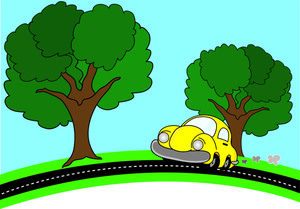Color: Difference between revisions
No edit summary |
No edit summary |
||
| Line 1: | Line 1: | ||
Claimed by Jeremy Gura | Claimed by Jeremy Gura | ||
Color is an | Color is an intensive physical property of matter, meaning that it is only dependant on the type of matter present. | ||
==The Main Idea== | ==The Main Idea== | ||
Color is an | Color is an intensive physical property of matter, in that it cannot be measured differently by two viewers of the same object. This can also be seen in if a large amount of matter is present as opposed to a small amount of the same matter, the color viewed by the same viewer is the same. The physical color seen and interpreted by a viewer is subject to the brain and the eyes of the individual. The object itself absorbs a certain amount of light and reflects the rest. The wavelength of light that is reflected off the surface of the object is interpreted in the eye as a specific color. | ||
===A Mathematical Model=== | ===A Mathematical Model=== | ||
| Line 40: | Line 40: | ||
== | ==Examples== | ||
[[File:Caronroad.jpg|thumb|alt=Example|3 hour, 230-mile trip]] | |||
== | ==References== | ||
1. Chabay, Ruth W., and Bruce A. Sherwood. <i>Matter and Interactions</i>. Hoboken, NJ: Wiley, 2011. Print. | |||
2. "Velocity." Def. 2. Dictionary.com. N.p., n.d. Web. 29 Nov. 2015. | |||
3. <i>Velocity Expression</i>. Digital image. <i>Physics-Formulas</i>. N.p., n.d. Web. 29 Nov. 2015. | |||
4. <i>Animated Car On Road</i>. Digital image. <i>Clip Art Best</i>. N.p., n.d. Web. 29 Nov. 2015. | |||
==External links== | |||
[http://www.physicsclassroom.com/class/1DKin/Lesson-1/Speed-and-Velocity The Physics Classroom: Speed and Velocity] | |||
[http://hyperphysics.phy-astr.gsu.edu/hbase/vel2.html HyperPhysics: Average Velocity] | |||
[[Category:Properties of Matter]] | |||
Revision as of 02:04, 4 December 2015
Claimed by Jeremy Gura
Color is an intensive physical property of matter, meaning that it is only dependant on the type of matter present.
The Main Idea
Color is an intensive physical property of matter, in that it cannot be measured differently by two viewers of the same object. This can also be seen in if a large amount of matter is present as opposed to a small amount of the same matter, the color viewed by the same viewer is the same. The physical color seen and interpreted by a viewer is subject to the brain and the eyes of the individual. The object itself absorbs a certain amount of light and reflects the rest. The wavelength of light that is reflected off the surface of the object is interpreted in the eye as a specific color.
A Mathematical Model
Each color has a spectrum of wavelengths of light associated with it. The range of colors we are conditioned to seeing regularly are in the wavelength range of 400-650nm. Matter can technically reflect wavelengths above and below this, they can just not be seen with the naked eye. These wavelenghts for colors are listed below:
| Color | Wavelength (nm) |
|---|---|
| Violet | 400 |
| Indigo | 445 |
| Blue | 475 |
| Green | 510 |
| Yellow | 570 |
| Orange | 590 |
| Red | 650 |
Examples

References
1. Chabay, Ruth W., and Bruce A. Sherwood. Matter and Interactions. Hoboken, NJ: Wiley, 2011. Print.
2. "Velocity." Def. 2. Dictionary.com. N.p., n.d. Web. 29 Nov. 2015.
3. Velocity Expression. Digital image. Physics-Formulas. N.p., n.d. Web. 29 Nov. 2015.
4. Animated Car On Road. Digital image. Clip Art Best. N.p., n.d. Web. 29 Nov. 2015.